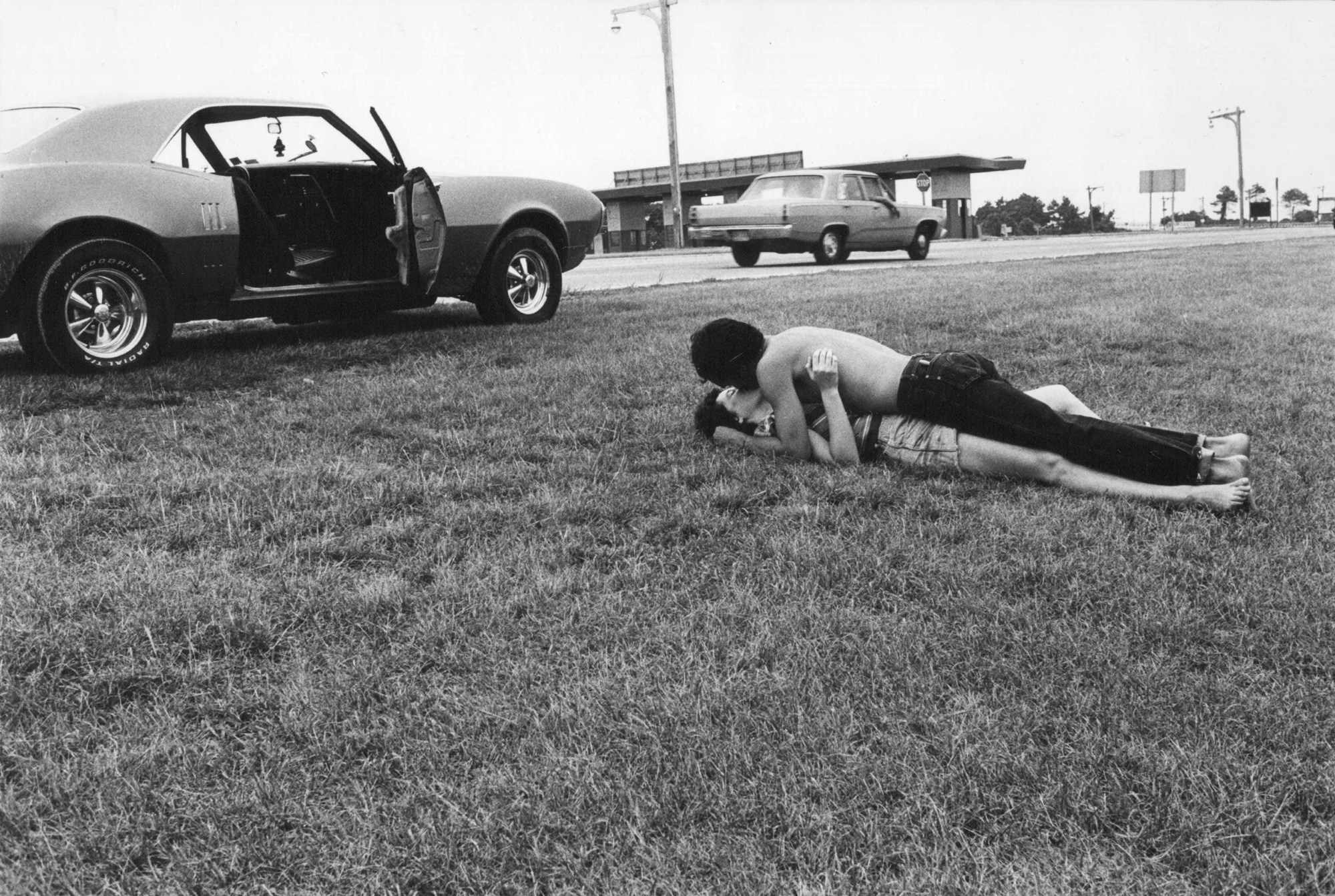Native New Yorker Arlene Gottfried photographed the city in black-and-white throughout the 1970s and 80s. She documented a city that was exhibitionist-friendly, feral, expressive, a metropolis replete with larger-than-life personalities. Her work is diverse, in every sense: the array of neighborhoods, ethnicities, ages, proclivities.
Gottfried’s day job was as a photographer for an advertising agency, but her personal portfolio was “all after-hours: weekends, evenings,” she says. The images span Rockaway Beach, the Brazilian Carnival at the Waldorf (“that was a great dance party”), Times Square, Roseland Ballroom (when it was actually a ballroom), disco parties (“wild, all in fun”), the Halloween Parade, Harlem, block parties on the Lower East Side, the Big Apple circus (“the early days—when it was in one tent on a landfill in Battery Park”).
Her exhibition ‘Sometimes Overwhelming’ is currently on view at Les Douches La Galerie in Paris. Sporting her own unique look (a velvet turban with a white feather and a sequined jacket), she discusses her favorite corners of New York, her reticence towards digital, and how laid-back people used to be about being snapped in their birthday suits.
There’s a sense of hedonism that seems foreign—if not altogether lost—in today’s New York. Were you pursuing that specifically?
It was a different time; that’s what presented itself. I went to the places that I was interested in: parades, the nude bay in Queens, Coney Island.
Were any of the subjects people that you saw regularly?
One is my mother. The muscular guy [Angeland Woman at Brighton Beach, 1976]—he was my neighbor from across the street in Brooklyn. So some I knew, but otherwise, they’re just people I met along the way.
At Riis Beach’s nude bay, were people cool about being photographed?
Yeah, when you think of it… I think, wow, really no one had minded. Everyone was so relaxed about it.
It seems unthinkable, especially in Hassid and Jewish Bodybuilder (1980)…
All of a sudden, [the Orthodox Jewish man] showed up on the boardwalk, and people started looking, because here he comes on a hot summer day all in black. Everyone’s either nude or in a suit. This other man comes up and says, “take my picture because I’m Jewish too.” [laughs] So that made the picture.
Do you feel a sense of nostalgia?
In a way. I can look back and remember very clearly when I took the photos. I used to travel around—I loved Staten Island. Before the bridge you’d take the ferry, and it was really like going back in time. It didn’t feel like New York—it was like a town in Somewhere, USA.
Your work feels bolder than a lot of documents of city life. How was it perceived at the time?
People say—and I hate to use words like—”weird” or “different” or “strange.” To me, they’re not. They’re just people who’re doing what they do. I think when you see them all together, it looks like a mixture of different walks of life—which it is—and it might look unusual to someone who hasn’t experienced the world that way, filled with many different kind of people doing different things.
How did you build your vision?
I went to a two-year photography program at FIT. We did studio courses and lighting, learning how to process and print. We didn’t do too much history of art or anything, so I didn’t really study a lot of photographers.
After graduating, I worked as an assistant for photographers in their studios; in those days there were very few women working. They didn’t wanna hire them because they didn’t think women could do the lifting, and carry the lighting, and all that. I did manage to get a job in advertising; when the guy above me quit, I got a staff job. We did everything there: from cigarettes packs to liquor bottles to people. Whatever they needed. It was the way photography used to be. A photographer did everything, not just specifically one type of thing: from photographing a glass to a fashion shoot. You had to really know your work and have a spectrum of the whole universe!
What’s your practice today?
I hate digital, if that’s what you’re asking. I don’t mean I hate it—it does great things. I’m really backwards when it comes to that. I have difficulty remembering it, practicing it. It’s not the same.
Do you ever use your phone, or photography is just done with a camera for you?
I don’t even have an upscale phone.
Is that code for a flip phone?
I have a flip phone. Very few people I know have them, and usually they’re in my age group.
Do you use a studio?
I have one where I live in Westbeth, the artist housing in the West Village; it’s a landmark building that opened in 71.
Do you still visit different neighborhoods in New York?
Not as much. The world’s a different place—not as exciting to me, anymore. I still do some pictures now and again. Mommie is my most recent book.
Your written recollections in the book are just as moving as the images. My favorite caption is the one where you photograph your mom on the phone, and she yells, ‘Stop taking so many pictures! Man Ray only took a few!’
It’s a fact, actually! [laughs] One time we were watching a documentary on PBS, and they said he didn’t shoot a lot!
‘Sometimes Overwhelming’ is on view through March 5 at Les Douches La Galerie, 5 Rue Legouvé, 75010 Paris.
Credits
Text Sarah Moroz
All images courtesy Arlene Gottfried & Les Douches La Galerie
